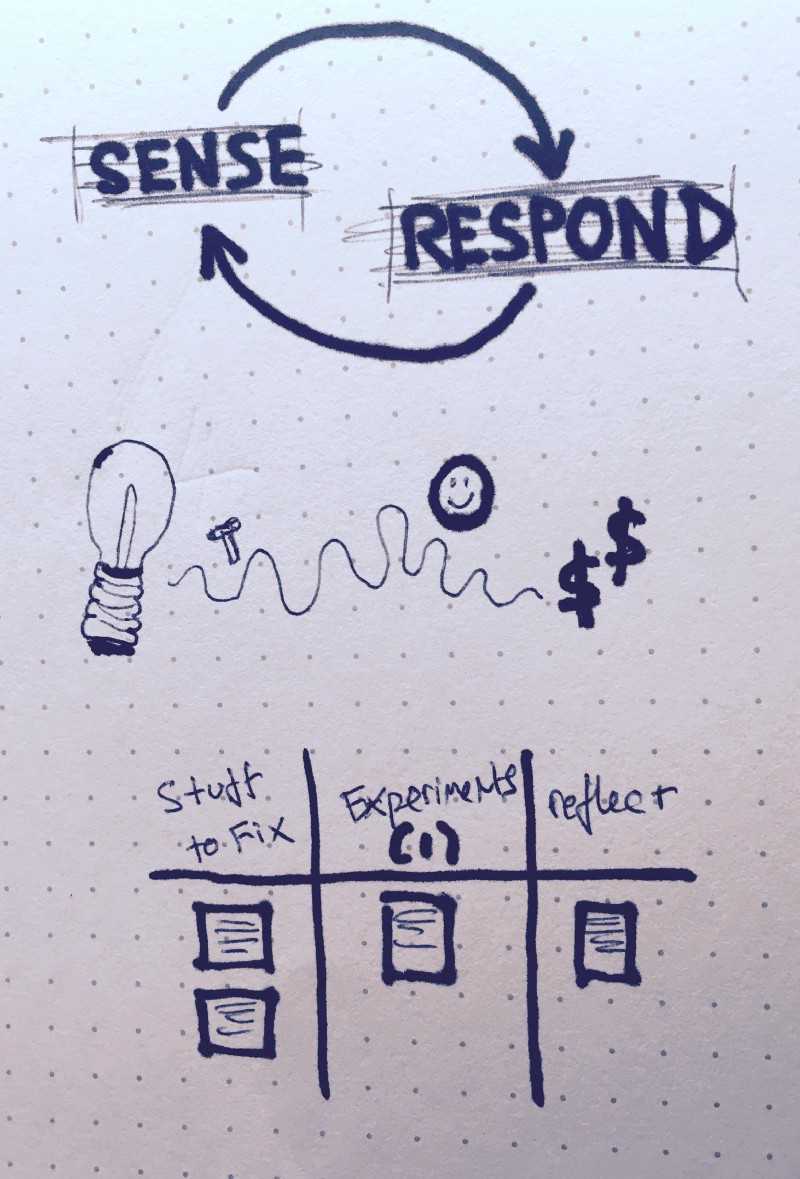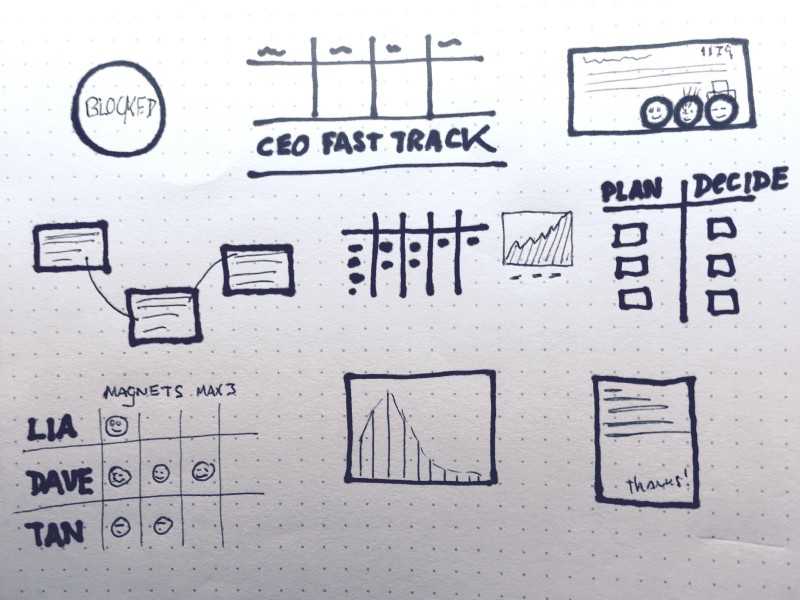I’ve been thinking lately about what it means to be disciplined in product development work. How do we do the right thing, even when doing the right thing is hard, inconvenient, and counterintuitive to outsiders?
(Almost daily) I urge teams to take responsibility for their working agreements, “process”, continuous improvement, and principles. No this is NOT code or a design. But it is the best way, in my opinion, to advocate for craft, sustainability, and not cutting corners. I am often asked to just “set it up”. But I explain that you have to internalize and live these principles. You can’t outsource it.
- Pull (don’t push) and limit work-in-progress
- Visualize things as they are
- Improve continuously Stepping back further, there’s an almost zen-like quality to all this. It’s a never-ending puzzle to solve. And some might argue (OK, I might argue) that it is kind of fun.
1. Pull (don’t push) and limit work-in-progress
Busyness is a drug. It’s heroic and pragmatic…a form of occupational theater. Instead, embrace the challenge of focus and flow. This is the hard, and disciplined work.
In a WIP constrained system, no individual or team is overloaded. You’re at your optimal level of utilization. You work hard and smart.
In a pull based system, starting something MUST involve finishing something else.
Together these create flow, and an opportunity to inspect and adapt.
2. Visualize things as they are
What is actually happening? How are we working?
Visualize ideas, work, decisions, information, flow, allocation, blockers, wins, losses, team energy, and experiments. Visualize everything. Get it out of your head. Show don’t tell. Clarify working agreements.
We use whatever else it takes … to make the invisible things visible. And when reality changes, we make that change visual. Always.
3. Improve continuously
By limiting work-in-progress and visualizing everything (and measuring), we can have the right conversations. The bottleneck emerges. And we chase it.
Have a conversation “at the board”. Where should we focus? What should we amplify, and what should we dampen? Invite the elephant in the room out for coffee. Make it safe.
Problems are opportunities, and everybody has ’em. Sense and seize those opportunities.
 As a companion to this post (and to understand one of my key inspirations), I recommend reading The Principles of the Kanban Method by David Anderson
As a companion to this post (and to understand one of my key inspirations), I recommend reading The Principles of the Kanban Method by David Anderson
. I especially love the principle “Start with what you do now.”
